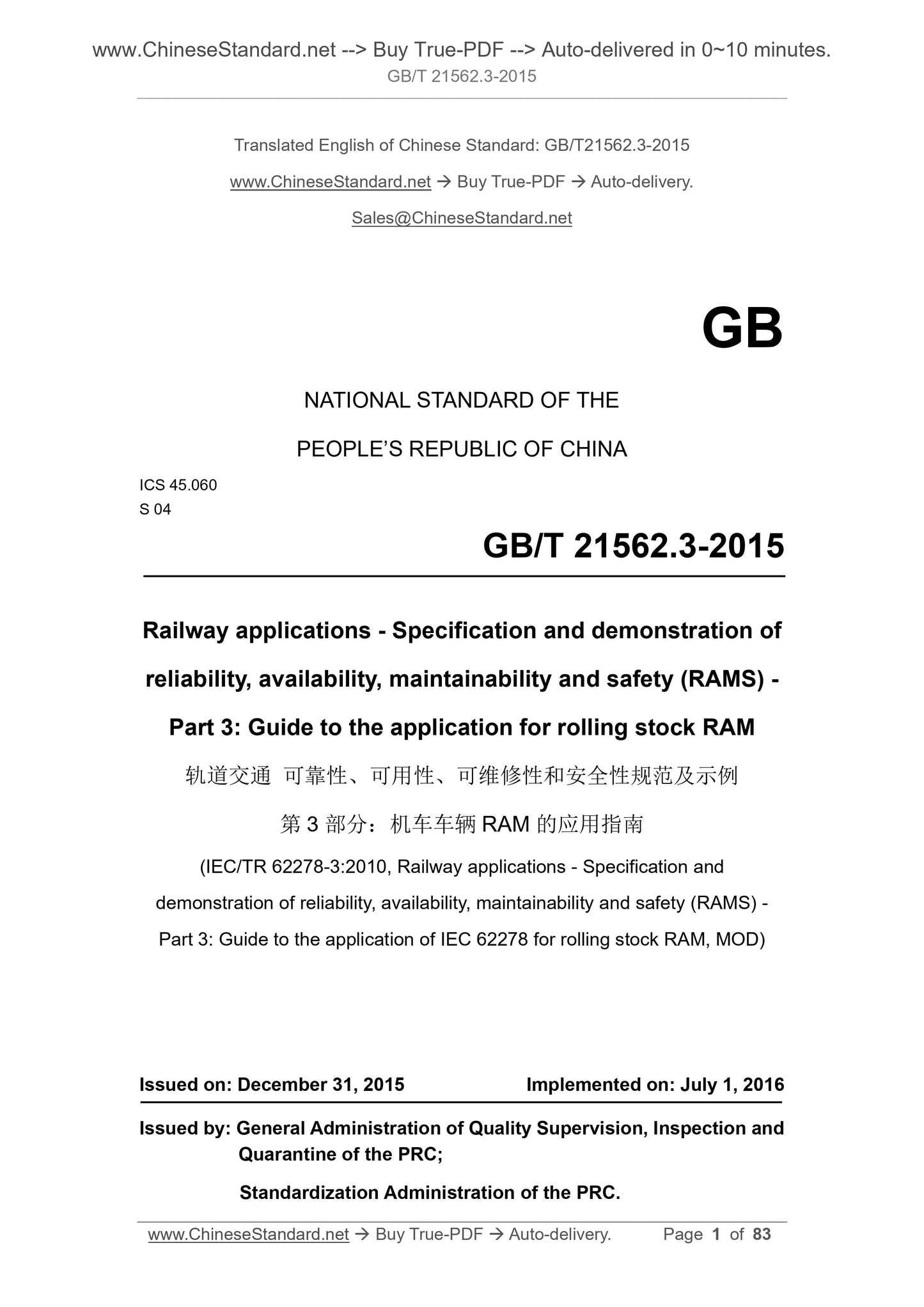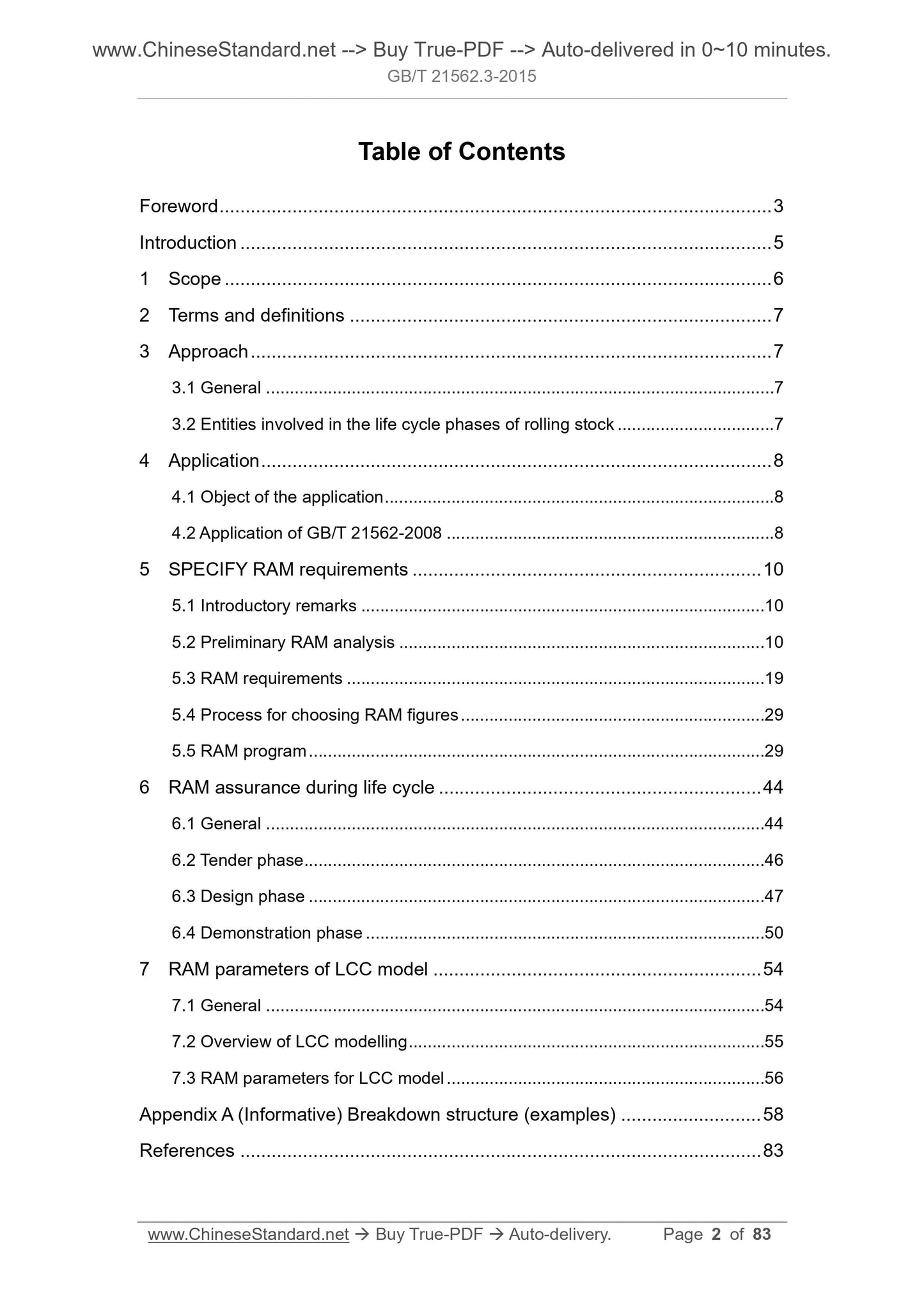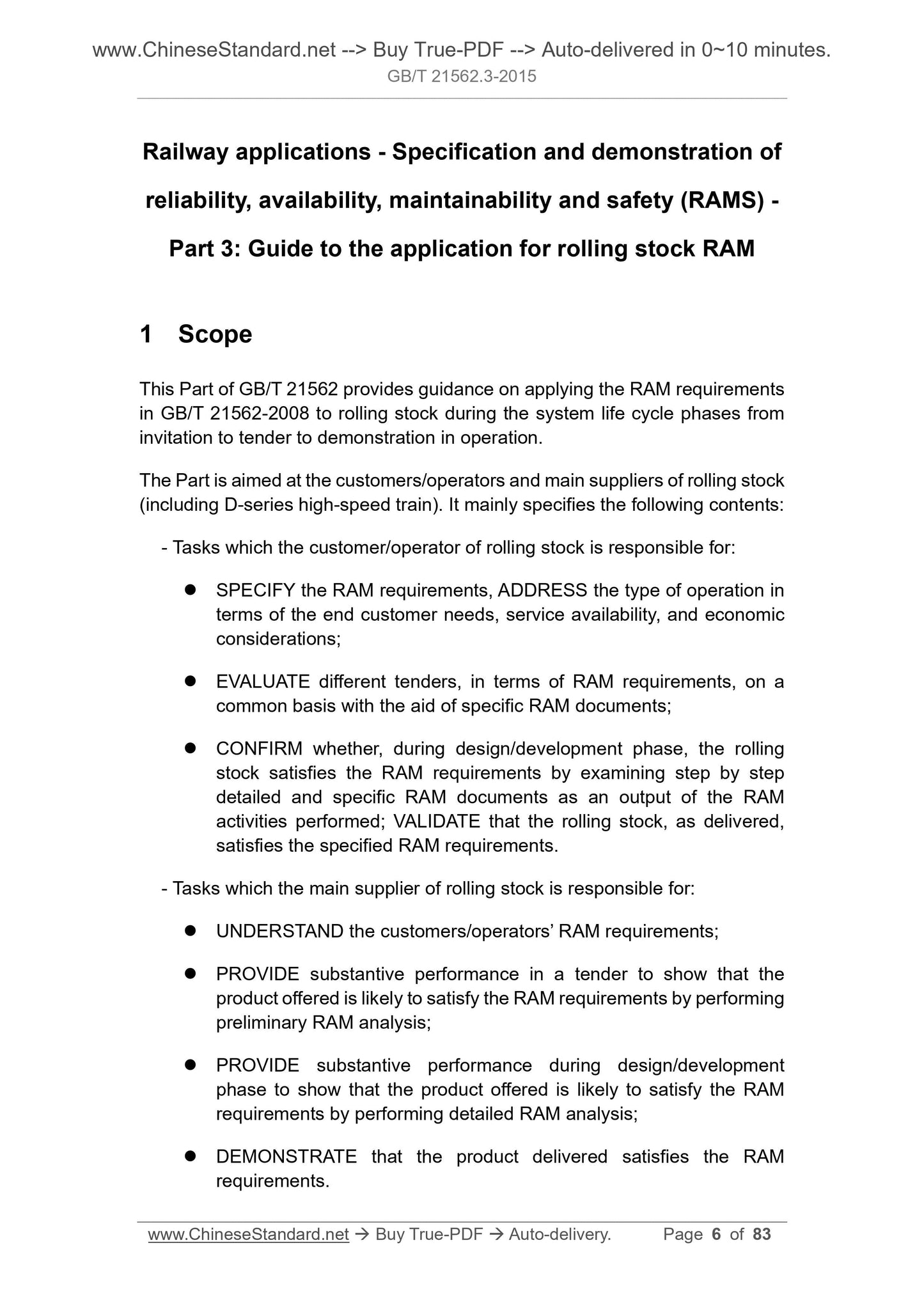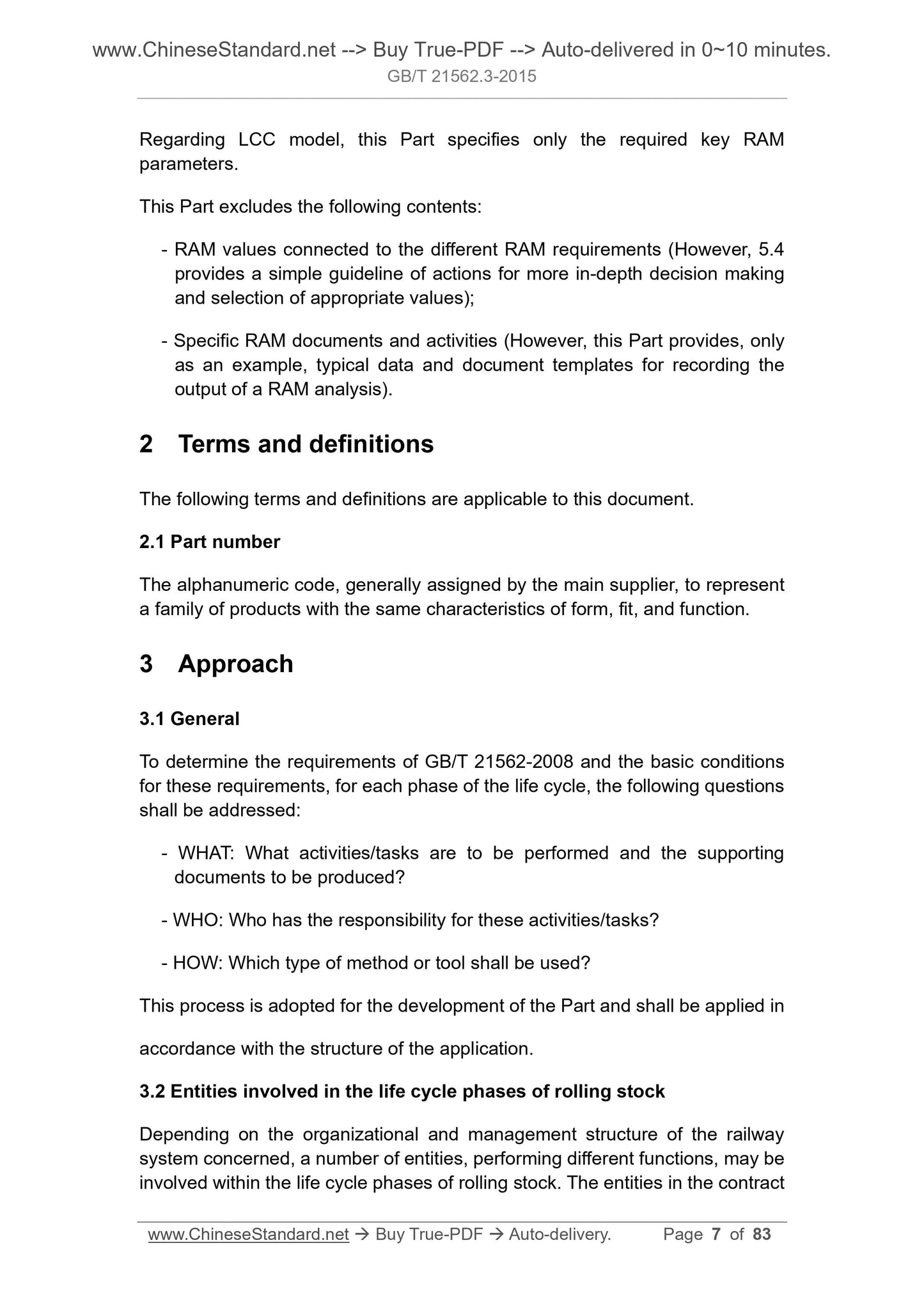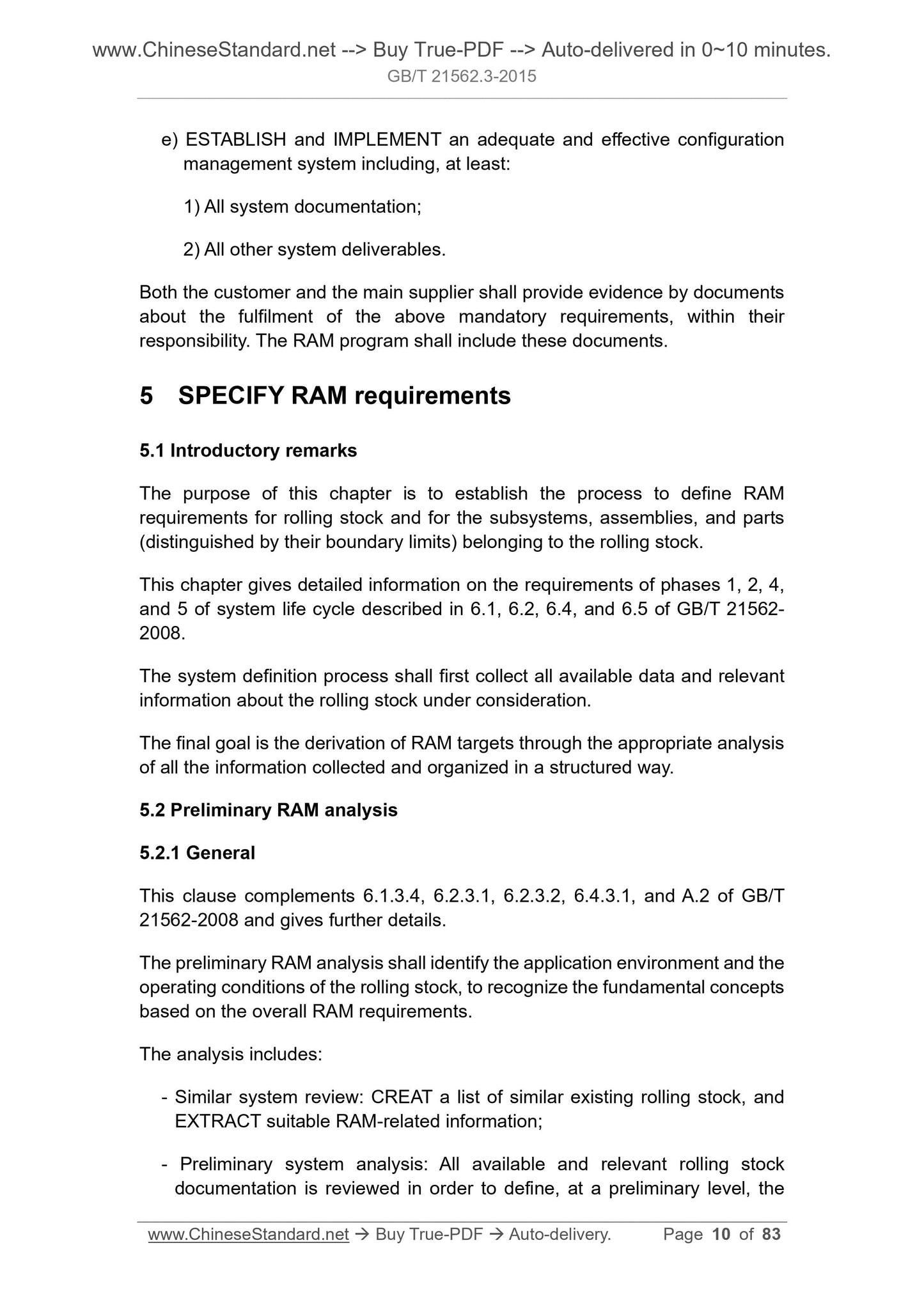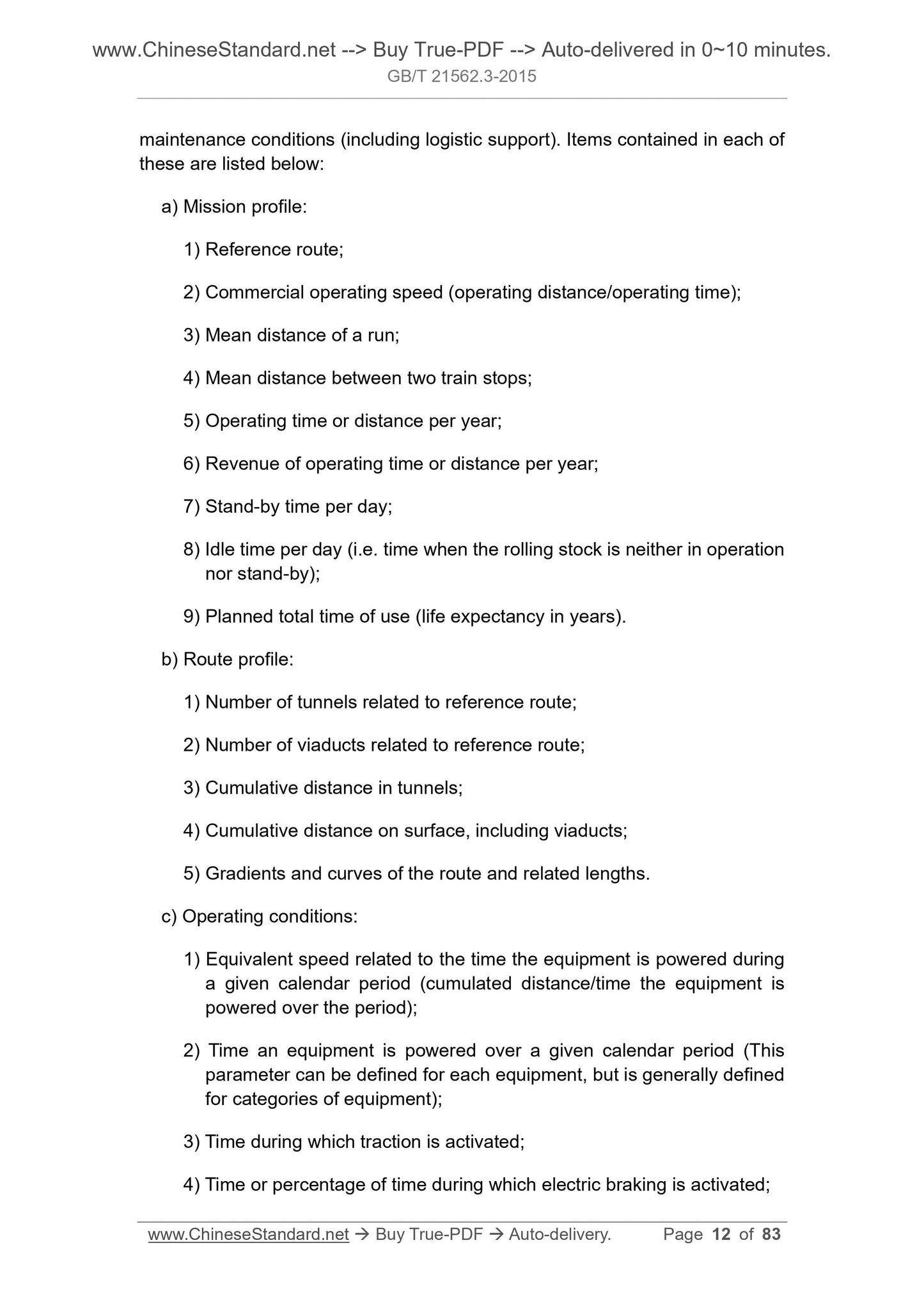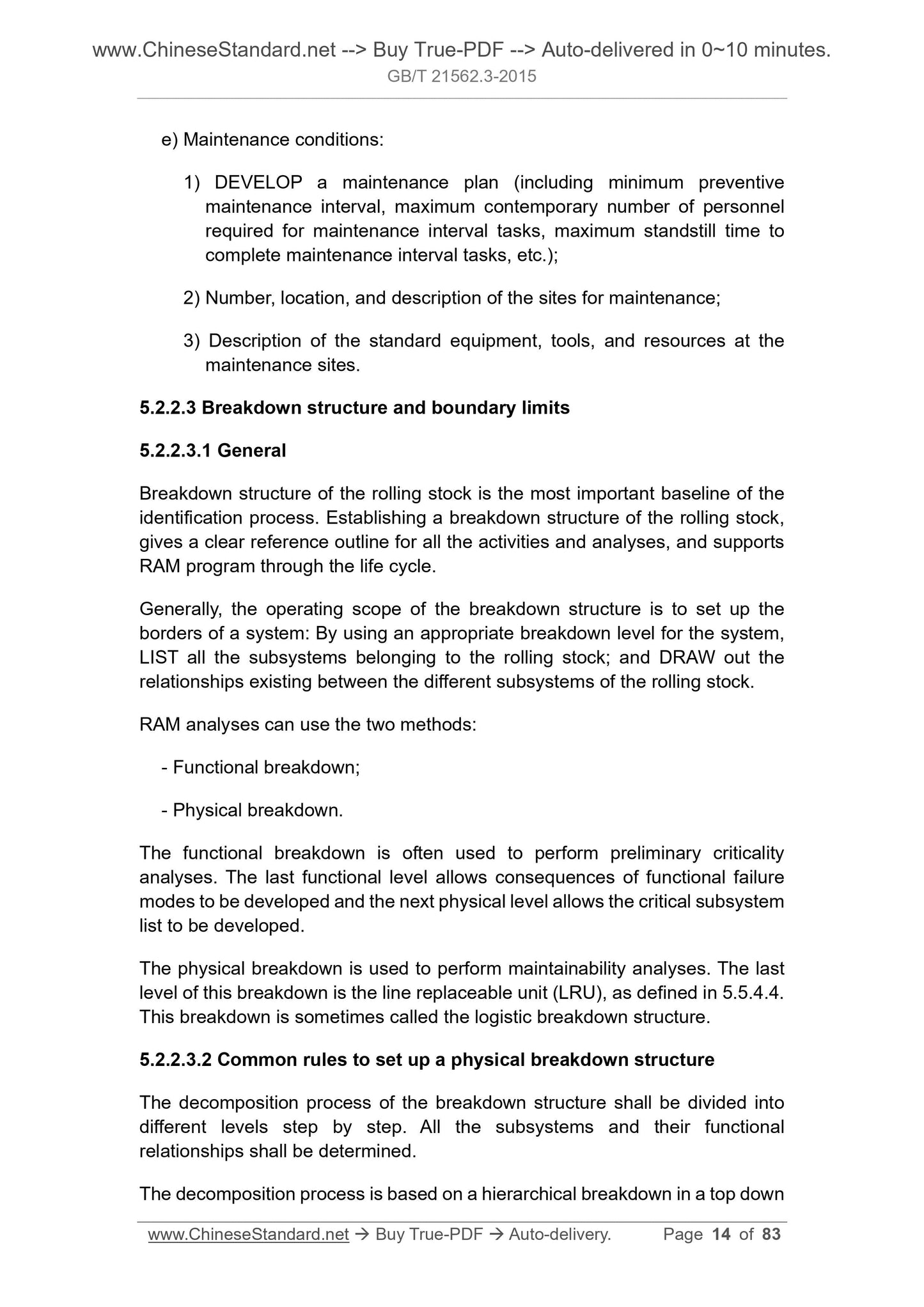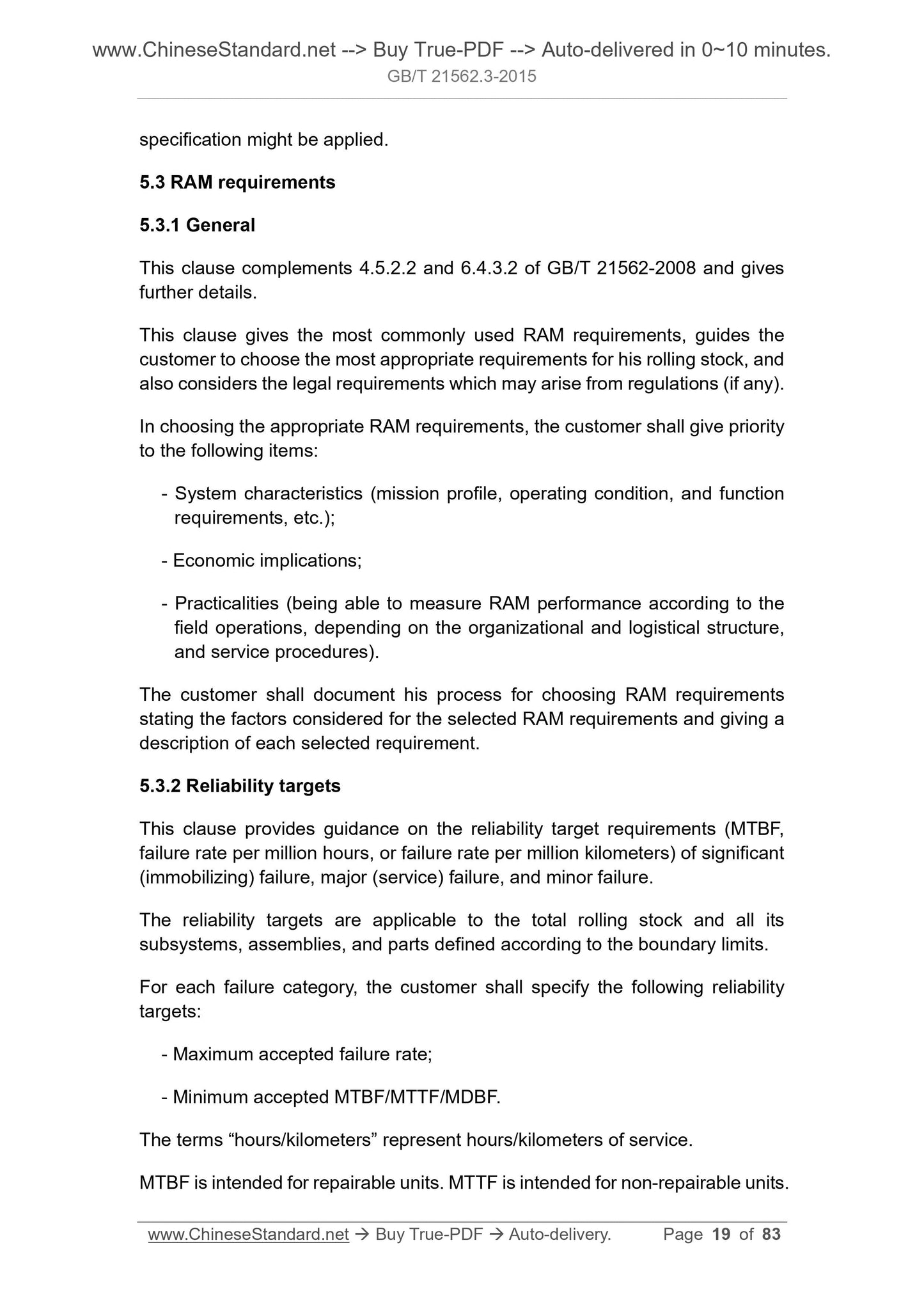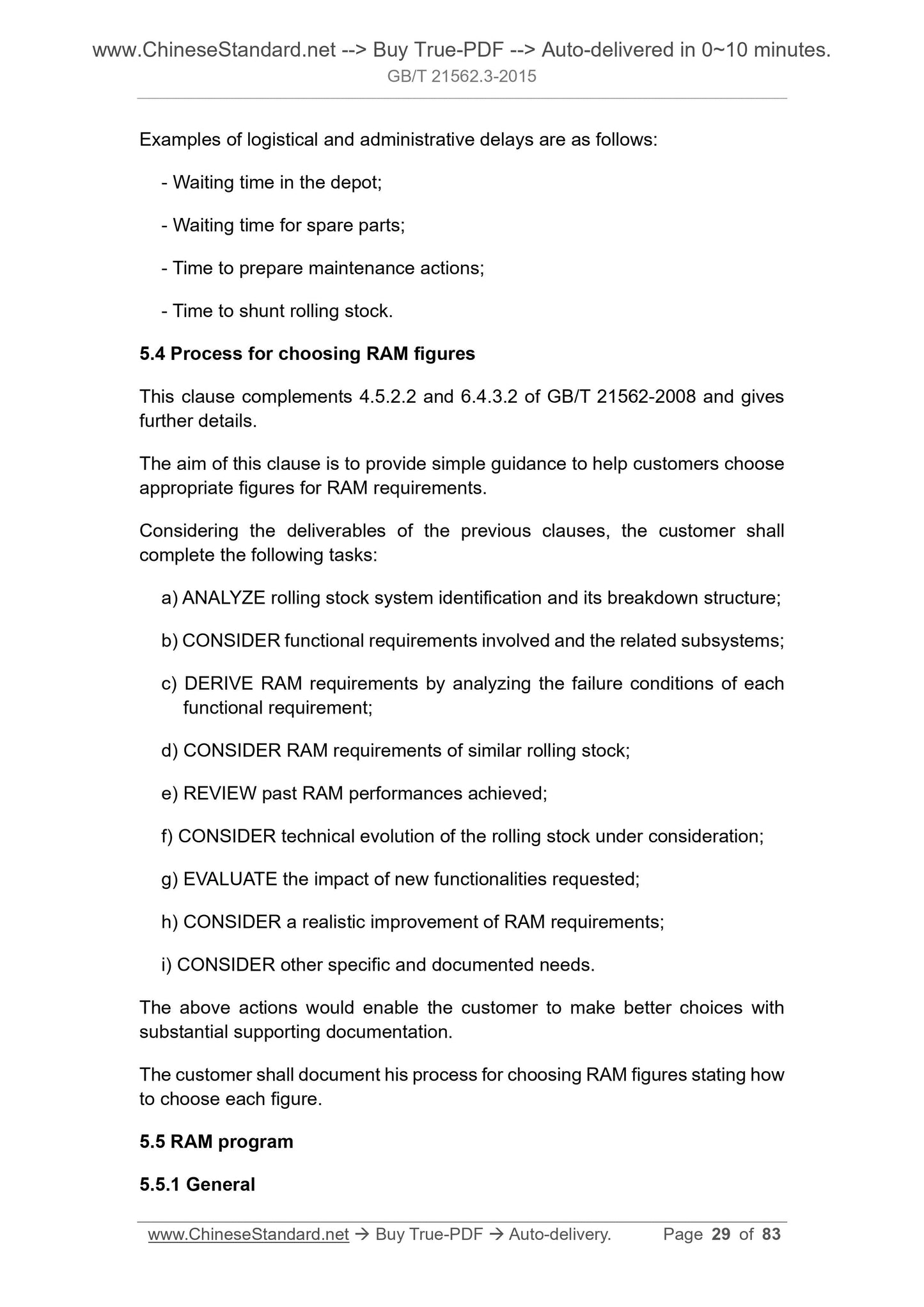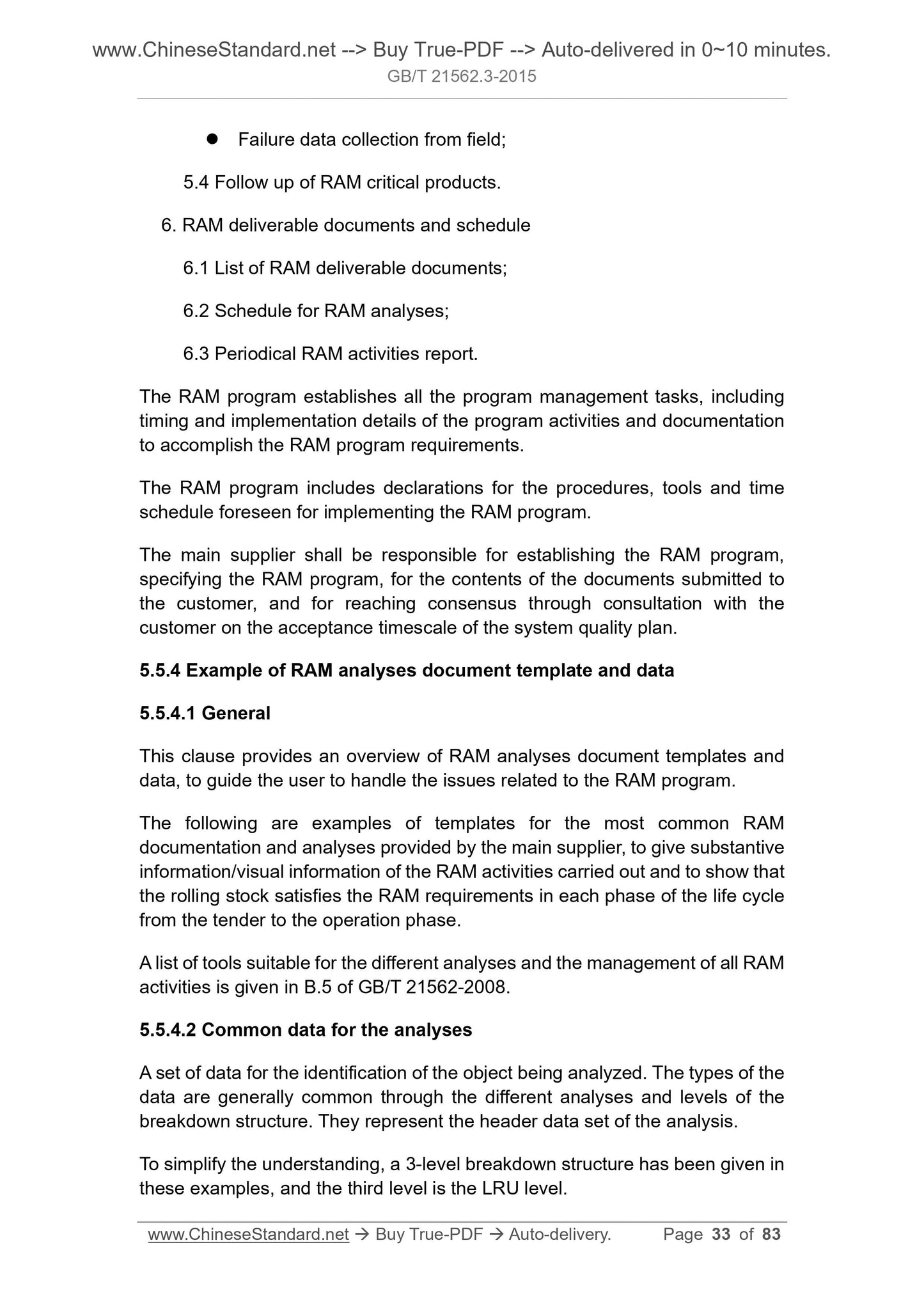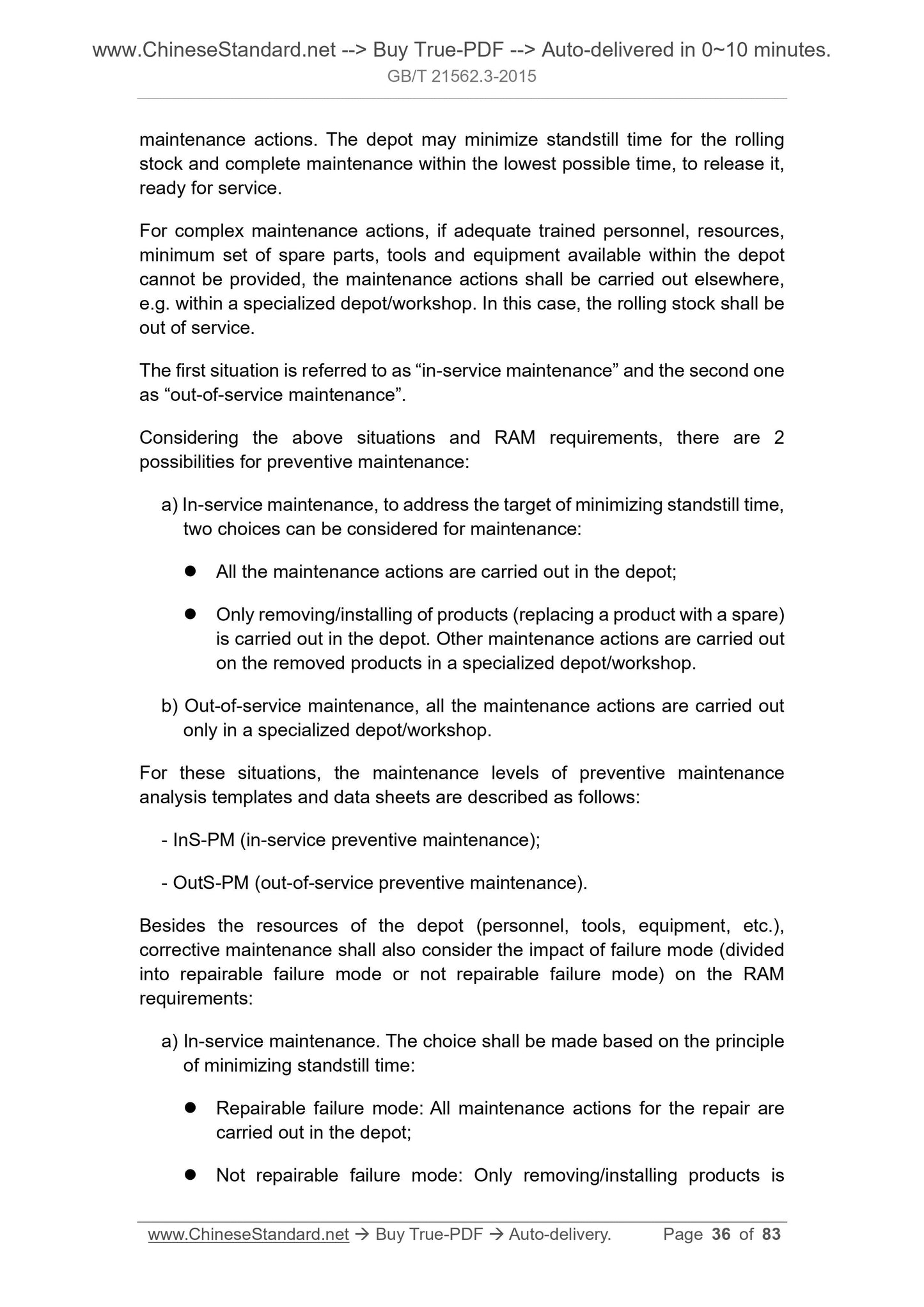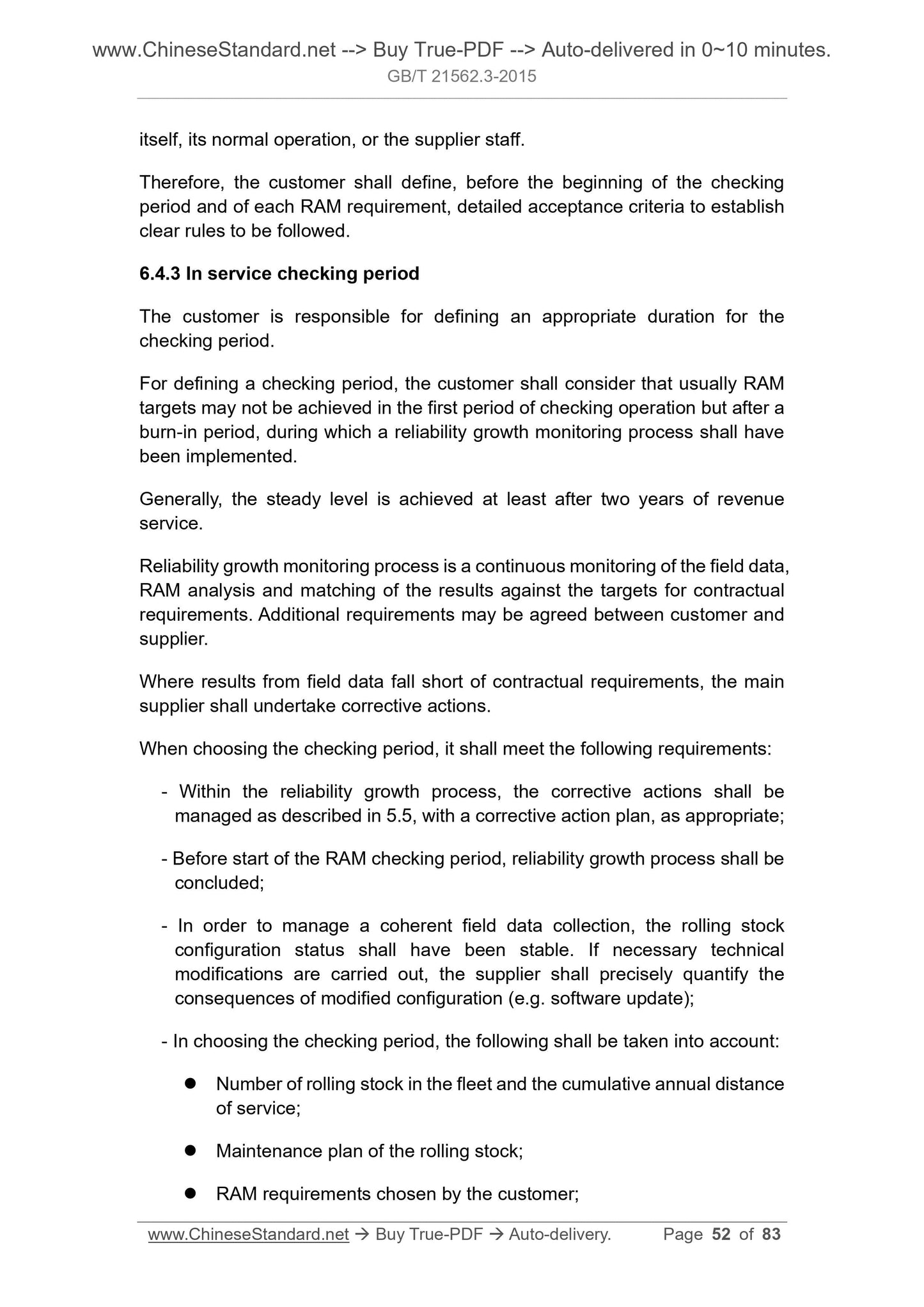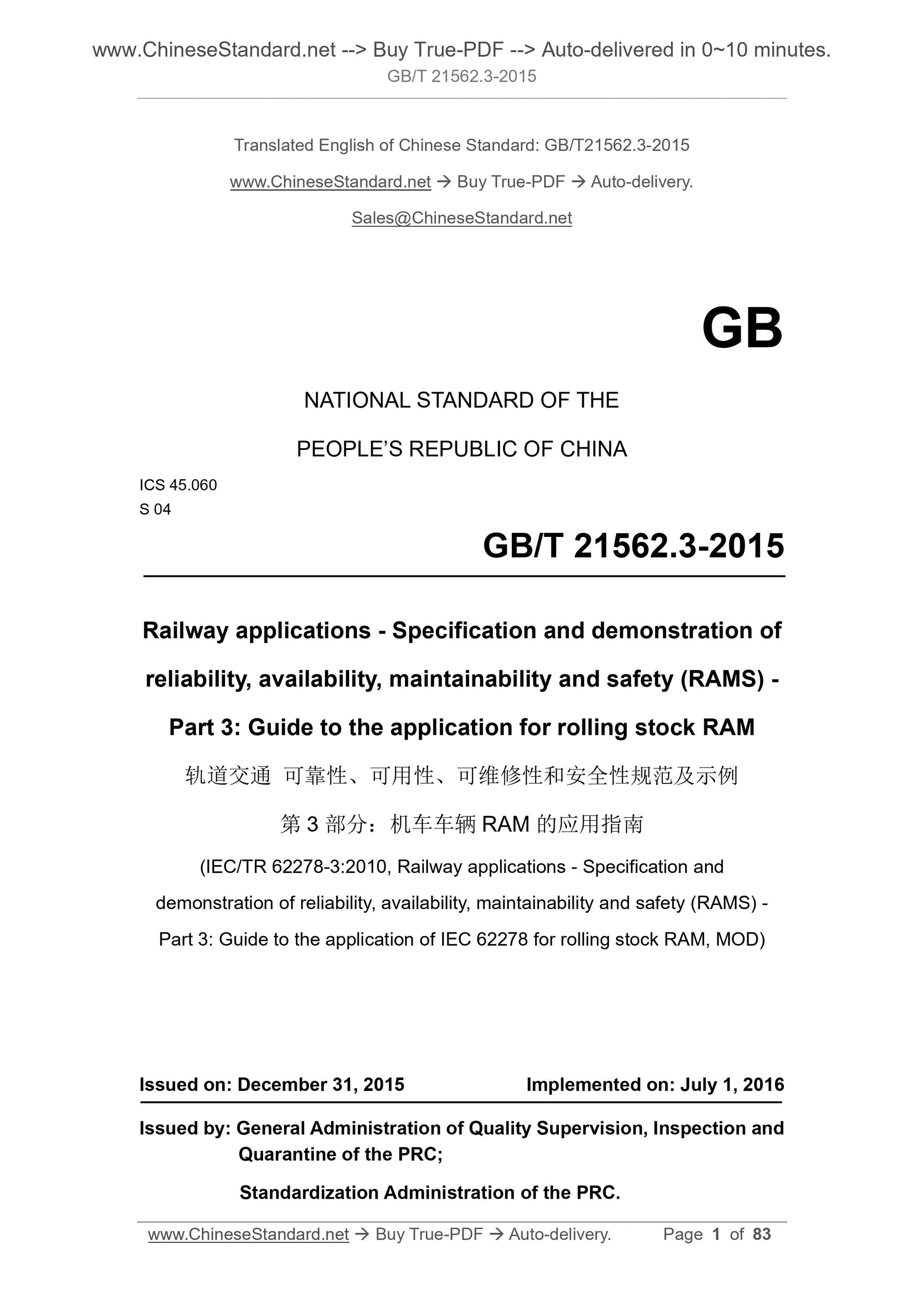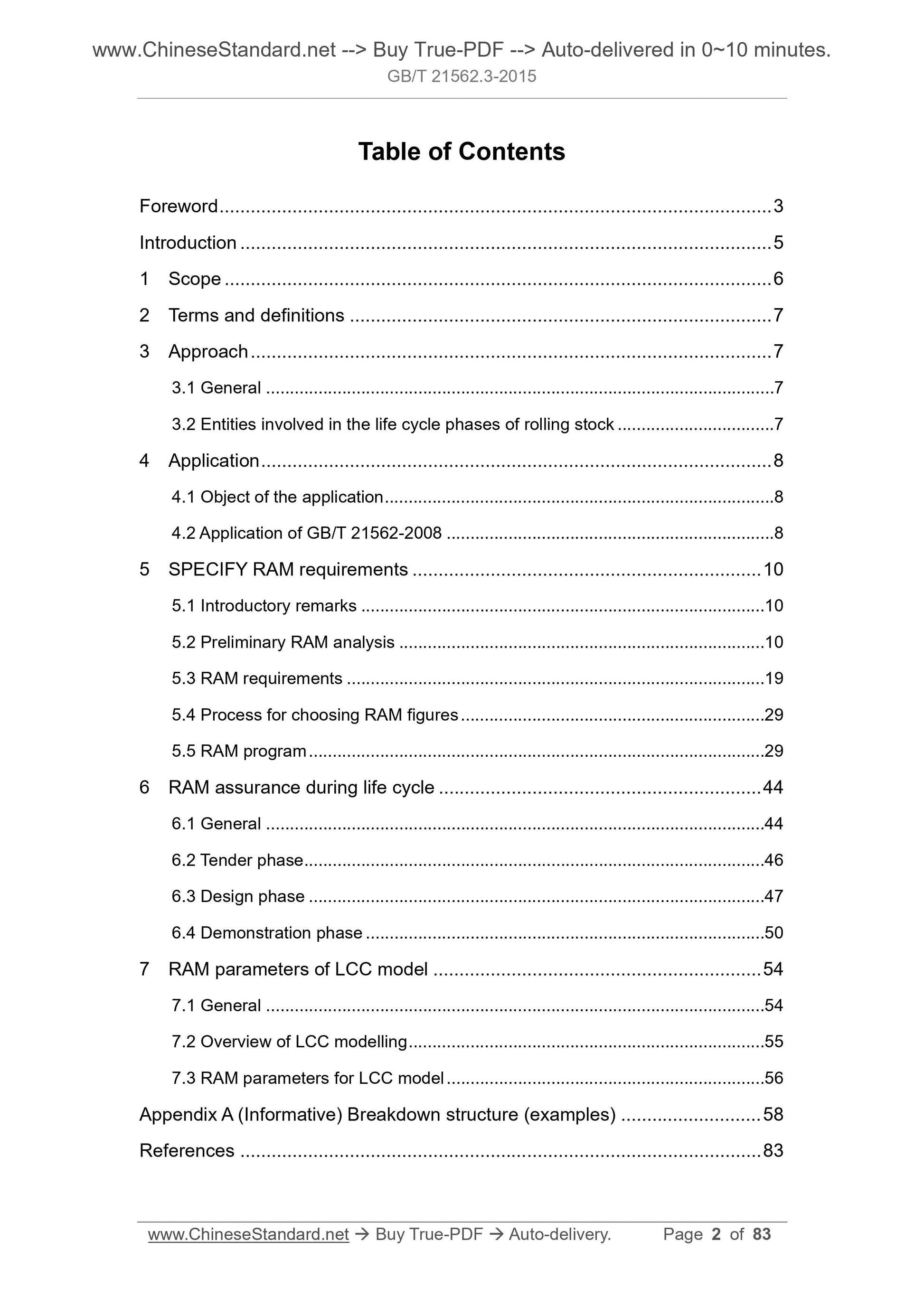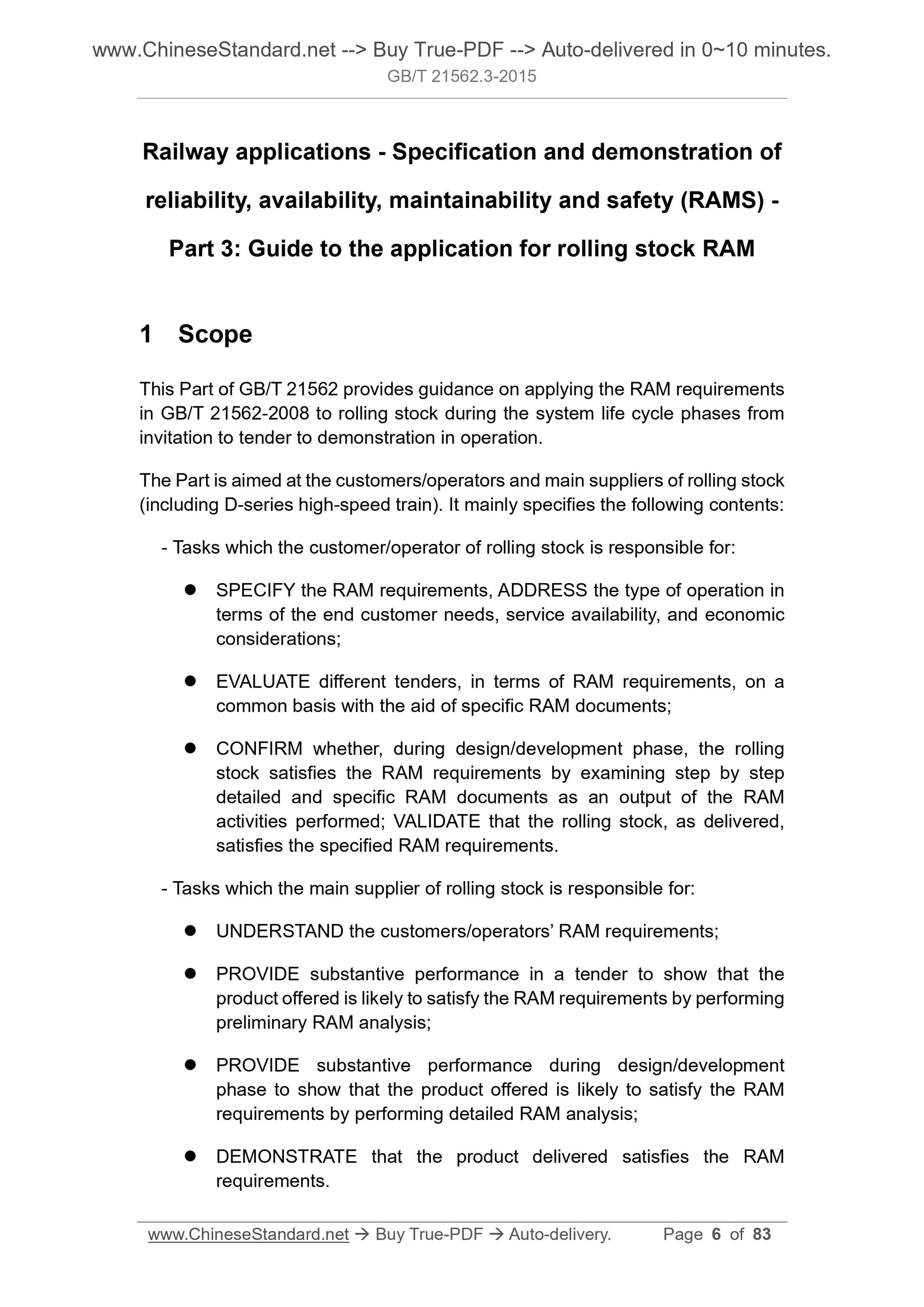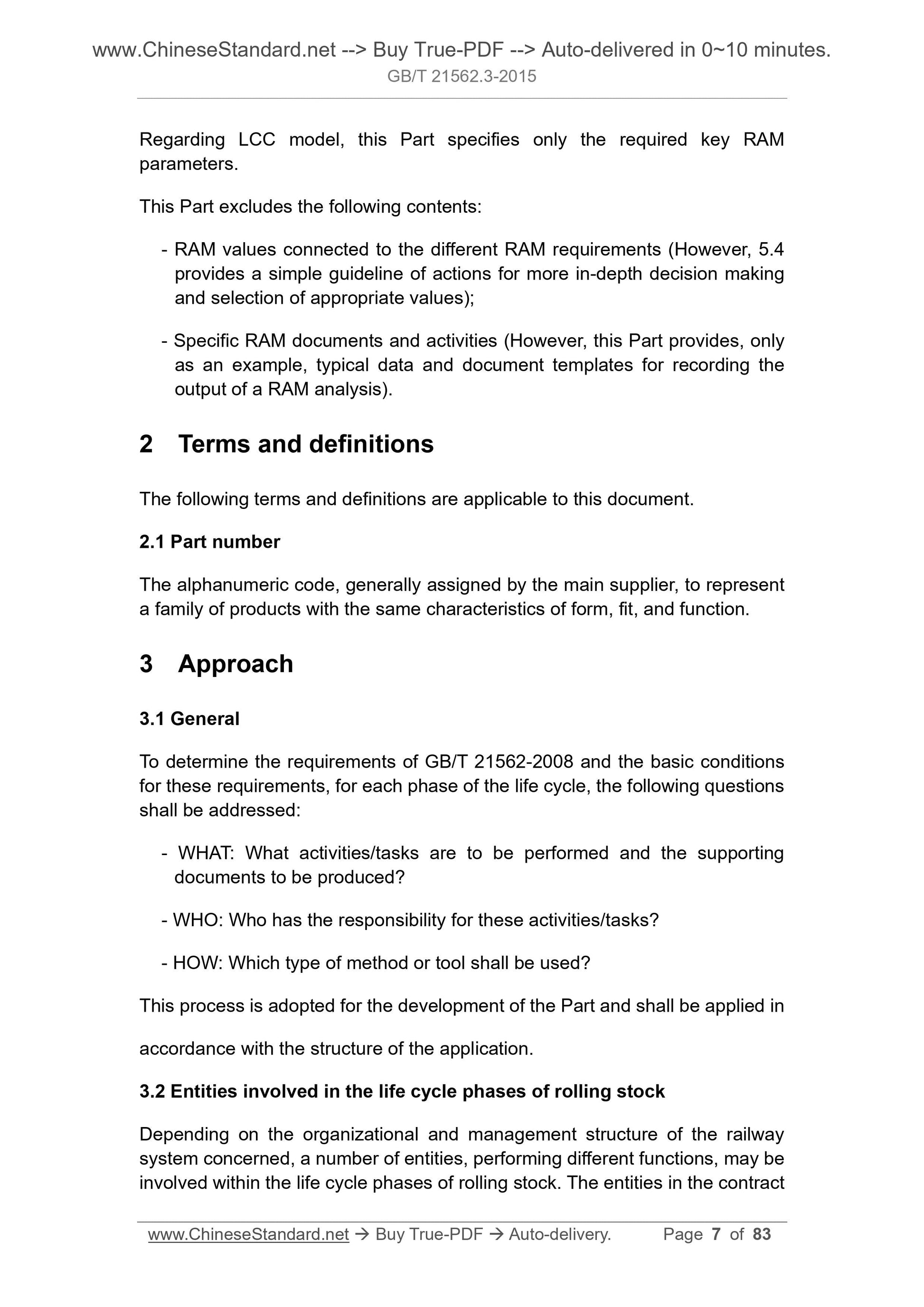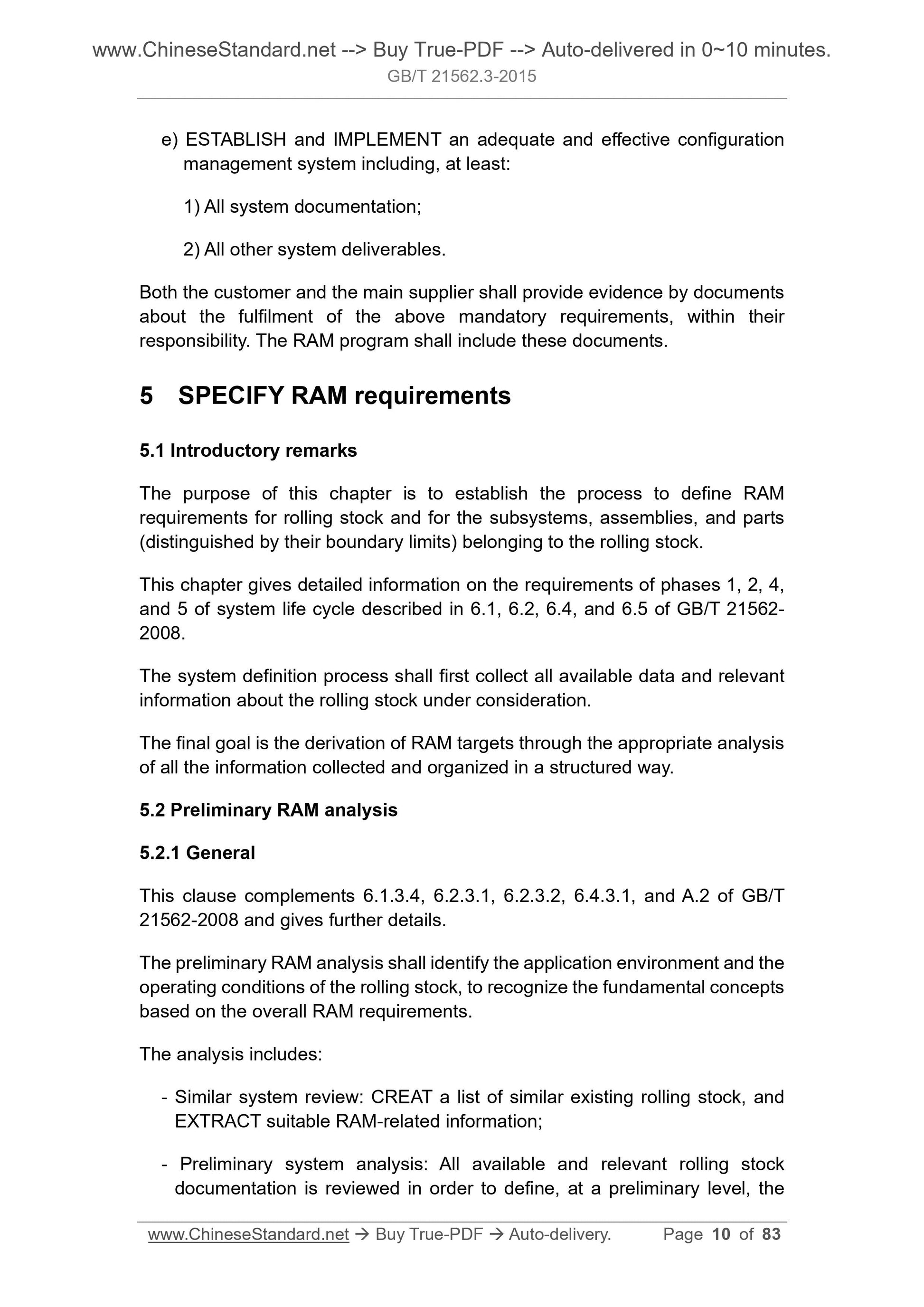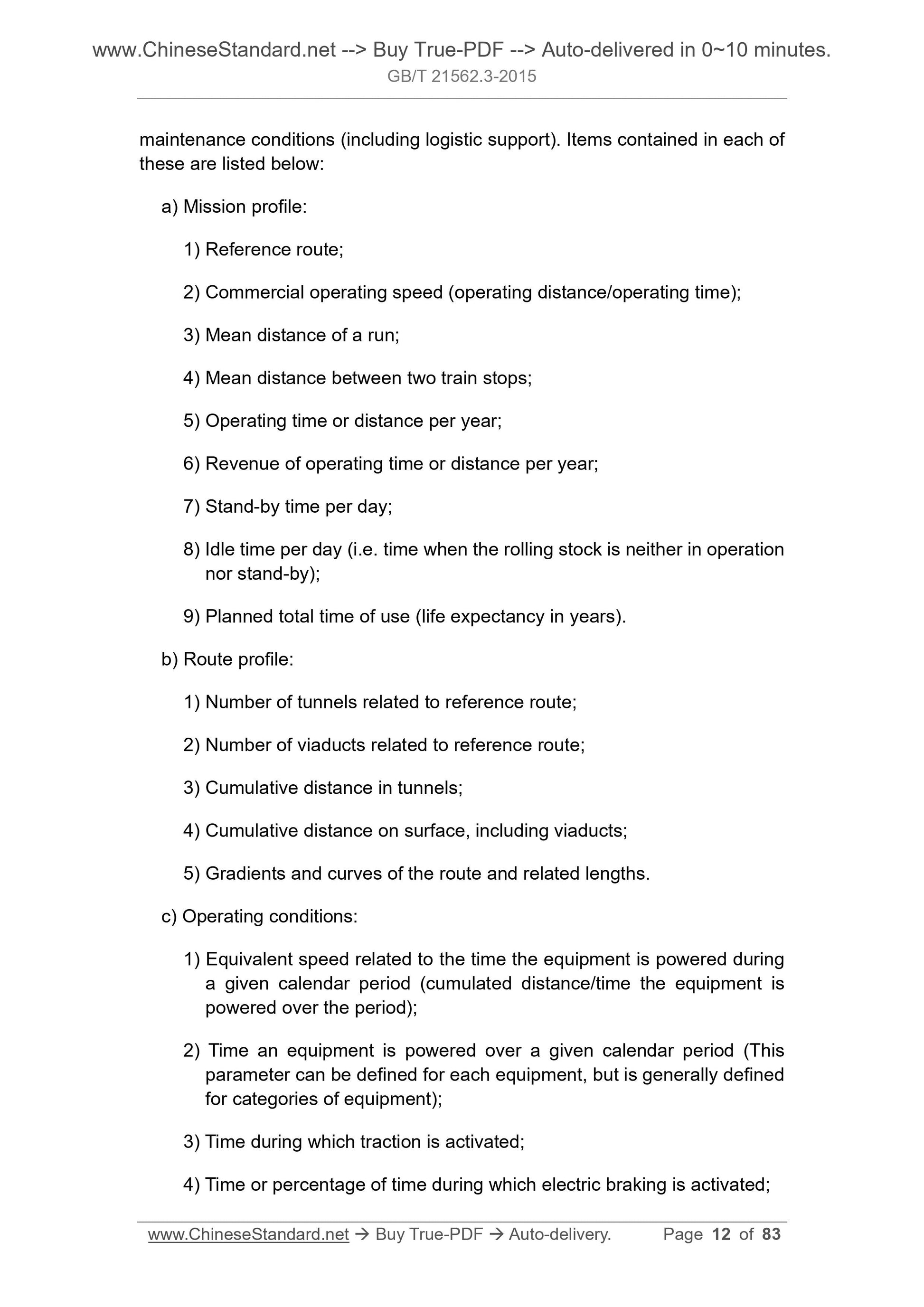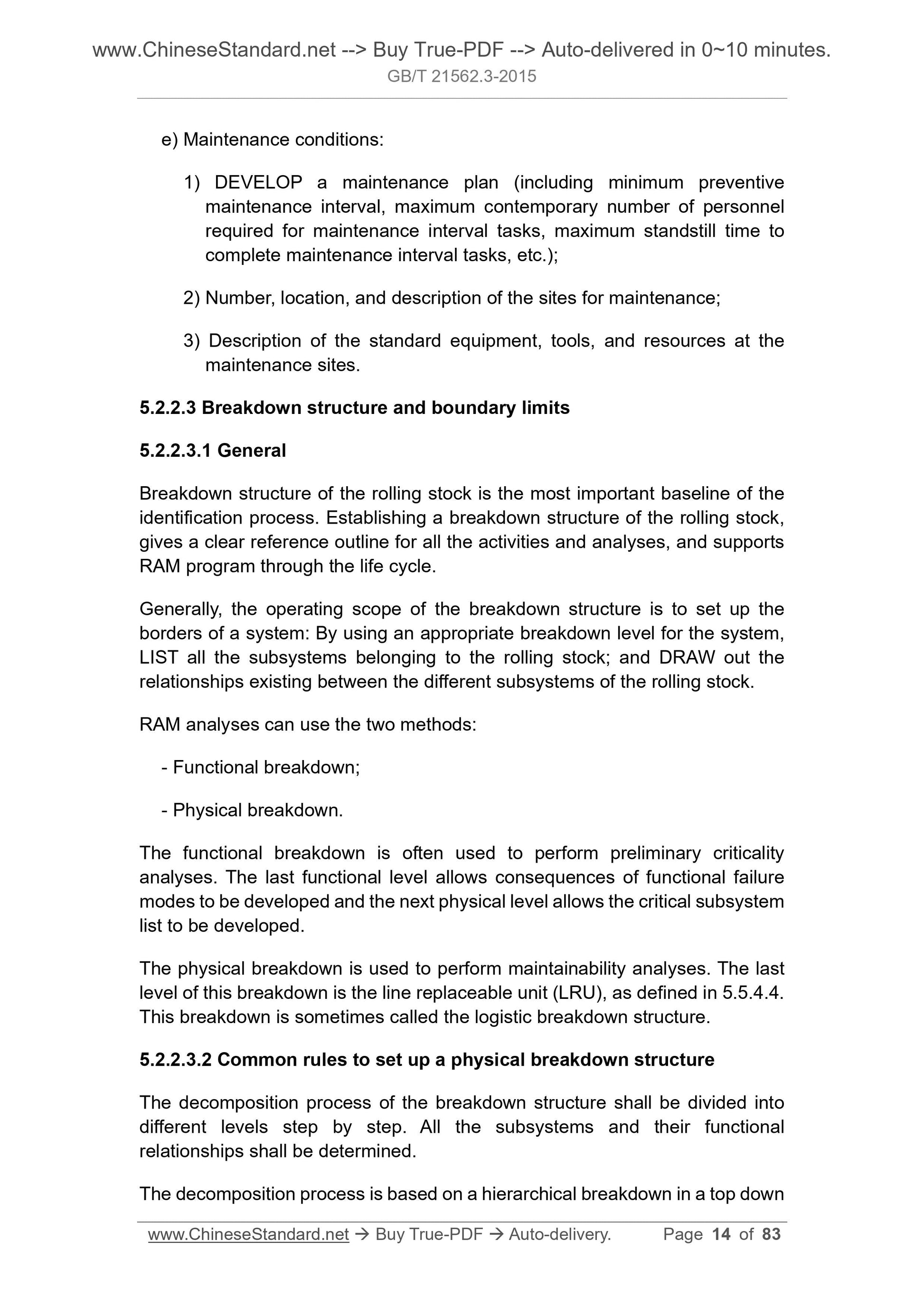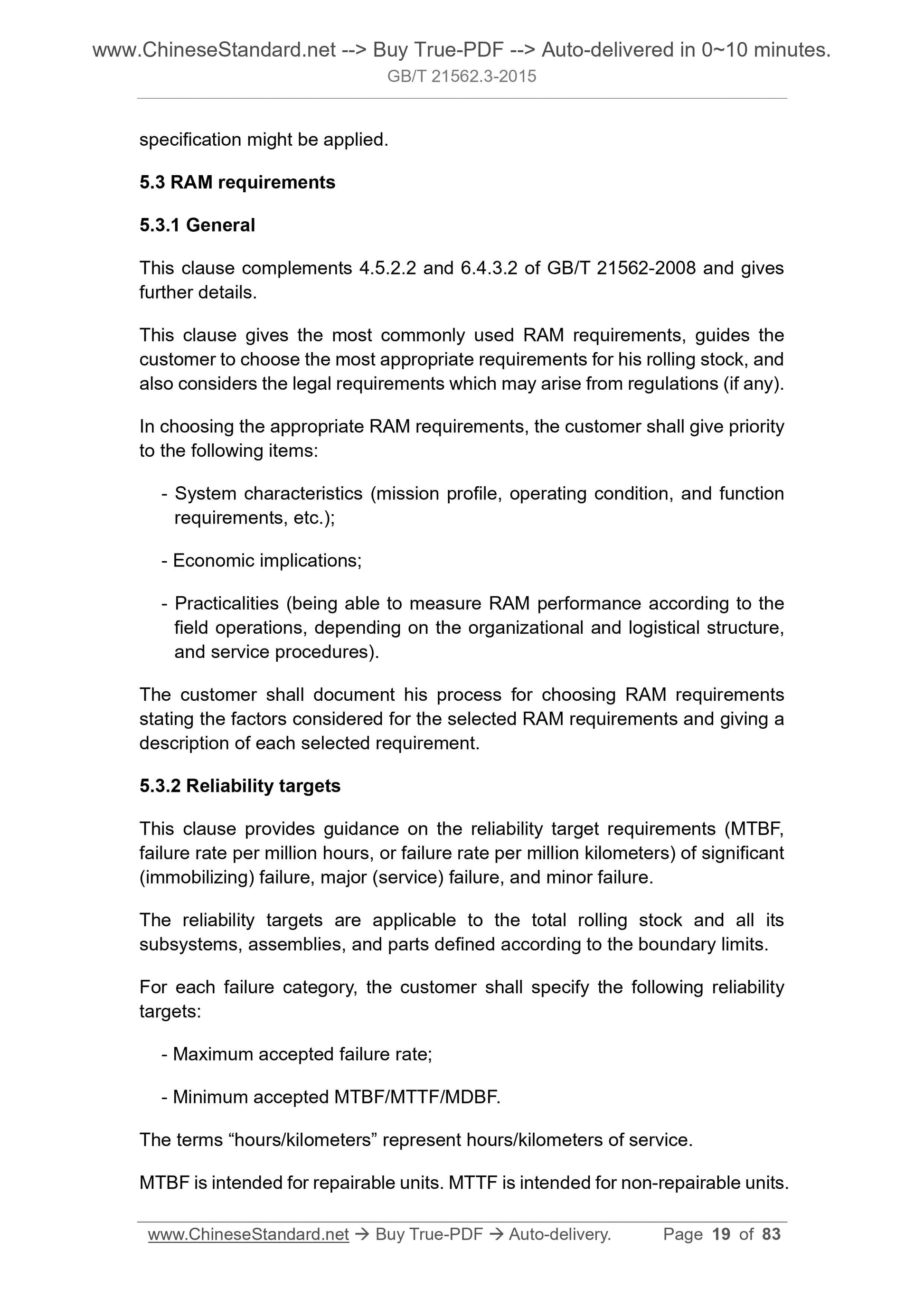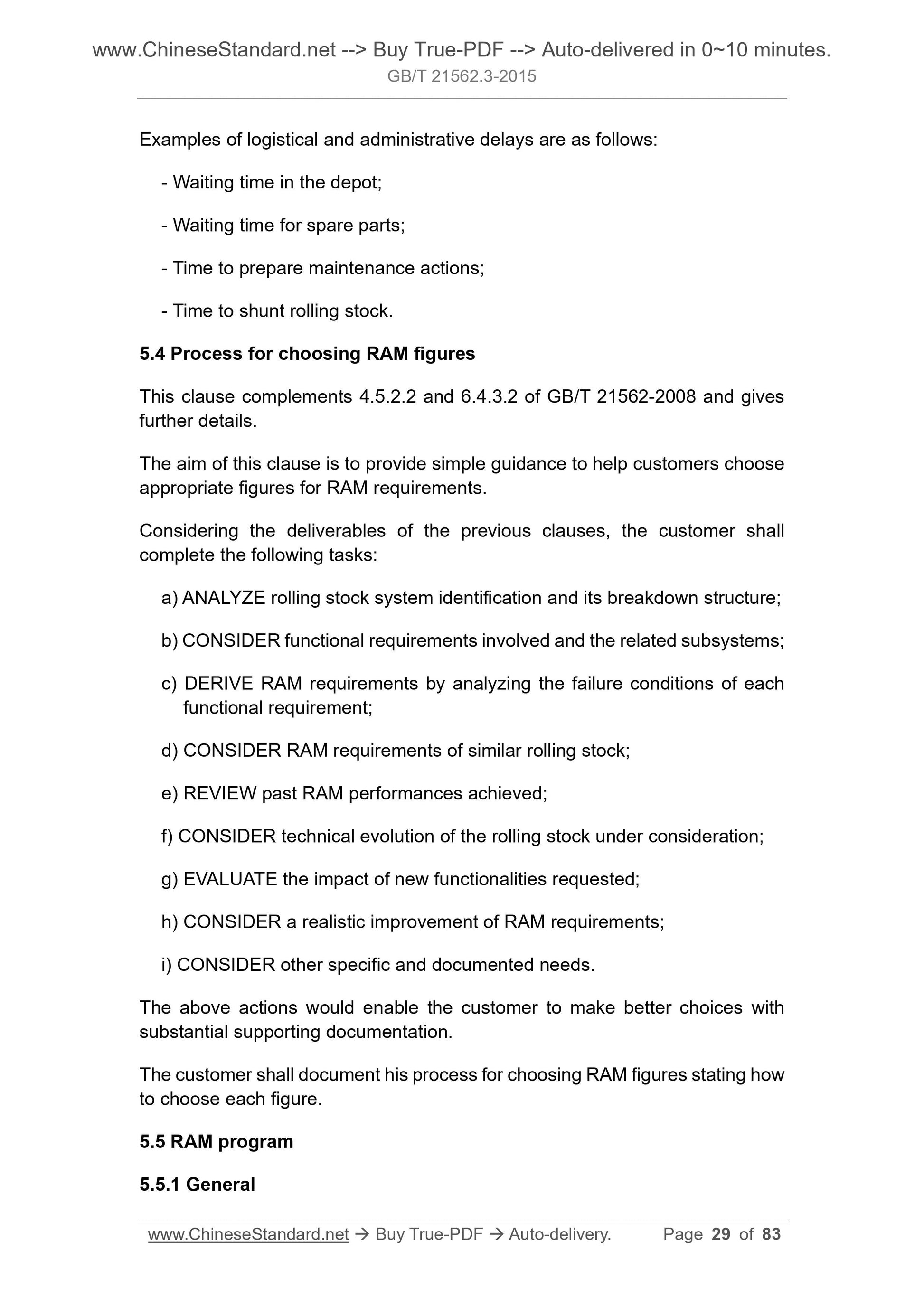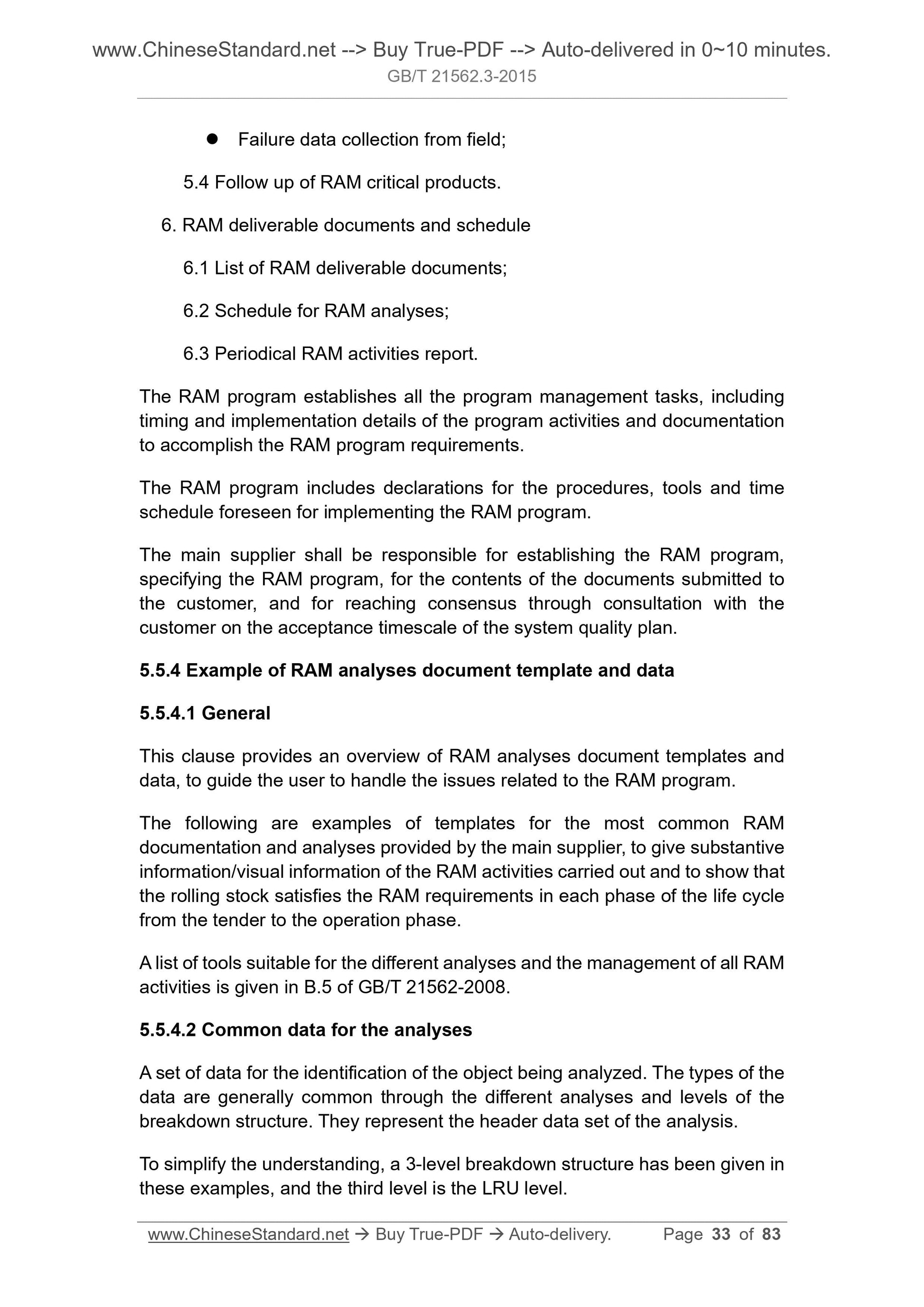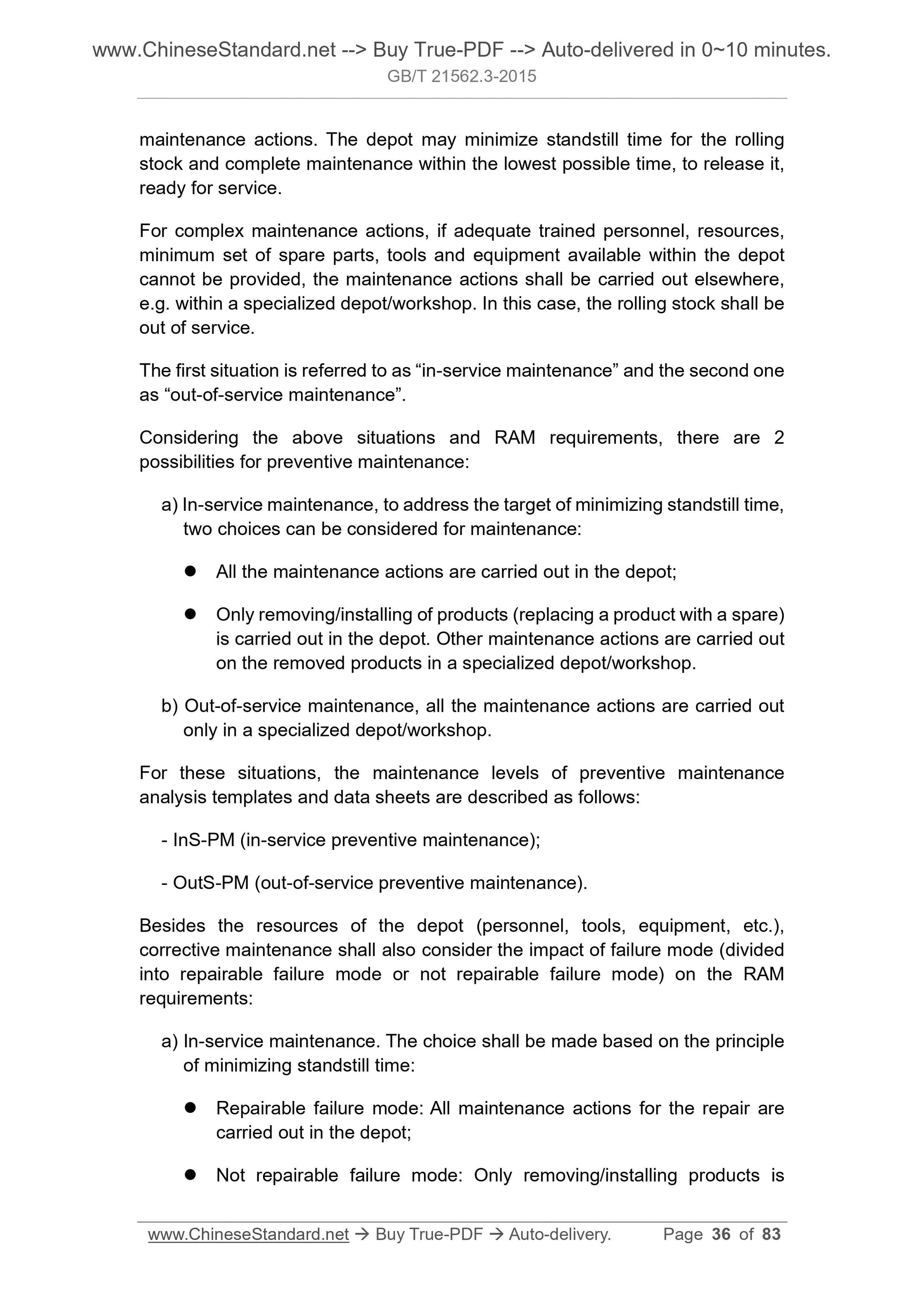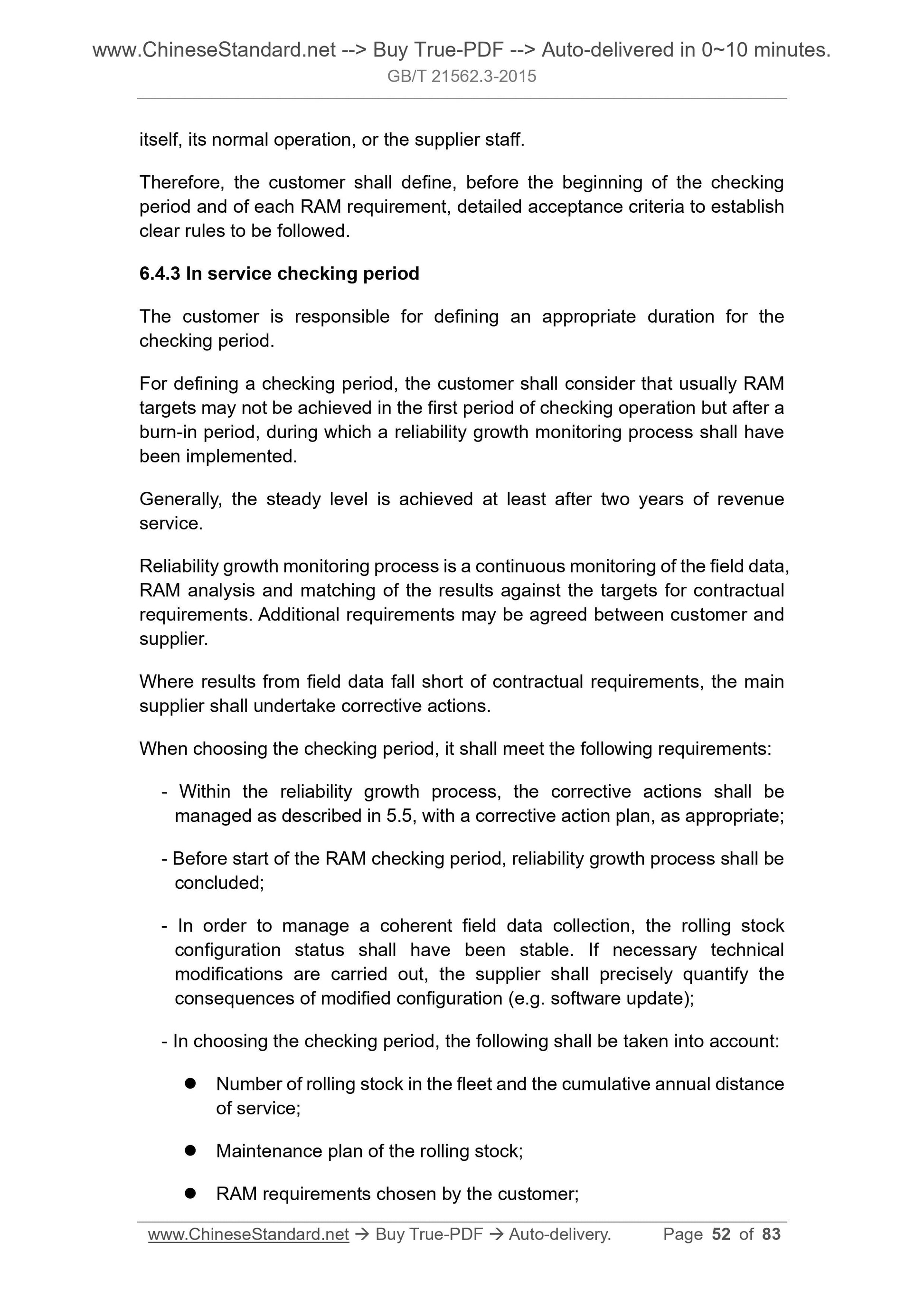1
/
of
12
www.ChineseStandard.us -- Field Test Asia Pte. Ltd.
GB/T 21562.3-2015 English PDF (GB/T21562.3-2015)
GB/T 21562.3-2015 English PDF (GB/T21562.3-2015)
Regular price
$155.00
Regular price
Sale price
$155.00
Unit price
/
per
Shipping calculated at checkout.
Couldn't load pickup availability
GB/T 21562.3-2015: Railway applications -- Specification and demonstration of reliability, availability, maintainability and safety (RAMS) -- Part 3: Guide to the application for rolling stock RAM
Delivery: 9 seconds. Download (and Email) true-PDF + Invoice.Get Quotation: Click GB/T 21562.3-2015 (Self-service in 1-minute)
Newer / historical versions: GB/T 21562.3-2015
Preview True-PDF
Scope
This Part of GB/T 21562 provides guidance on applying the RAM requirementsin GB/T 21562-2008 to rolling stock during the system life cycle phases from
invitation to tender to demonstration in operation.
The Part is aimed at the customers/operators and main suppliers of rolling stock
(including D-series high-speed train). It mainly specifies the following contents.
- Tasks which the customer/operator of rolling stock is responsible for.
SPECIFY the RAM requirements, ADDRESS the type of operation in
terms of the end customer needs, service availability, and economic
considerations;
EVALUATE different tenders, in terms of RAM requirements, on a
common basis with the aid of specific RAM documents;
CONFIRM whether, during design/development phase, the rolling
stock satisfies the RAM requirements by examining step by step
detailed and specific RAM documents as an output of the RAM
activities performed; VALIDATE that the rolling stock, as delivered,
satisfies the specified RAM requirements.
- Tasks which the main supplier of rolling stock is responsible for.
UNDERSTAND the customers/operators’ RAM requirements;
PROVIDE substantive performance in a tender to show that the
product offered is likely to satisfy the RAM requirements by performing
preliminary RAM analysis;
PROVIDE substantive performance during design/development
phase to show that the product offered is likely to satisfy the RAM
requirements by performing detailed RAM analysis;
DEMONSTRATE that the product delivered satisfies the RAM
requirements.
Regarding LCC model, this Part specifies only the required key RAM
parameters.
This Part excludes the following contents.
- RAM values connected to the different RAM requirements (However, 5.4
provides a simple guideline of actions for more in-depth decision making
and selection of appropriate values);
- Specific RAM documents and activities (However, this Part provides, only
as an example, typical data and document templates for recording the
output of a RAM analysis).
Basic Data
| Standard ID | GB/T 21562.3-2015 (GB/T21562.3-2015) |
| Description (Translated English) | Railway applications -- Specification and demonstration of reliability, availability, maintainability and safety (RAMS) -- Part 3: Guide to the application for rolling stock RAM |
| Sector / Industry | National Standard (Recommended) |
| Classification of Chinese Standard | S04 |
| Classification of International Standard | 45.060 |
| Word Count Estimation | 51,537 |
| Date of Issue | 2015-12-31 |
| Date of Implementation | 2016-07-01 |
| Regulation (derived from) | State Standard Announcement 2015 No.43 |
| Issuing agency(ies) | General Administration of Quality Supervision, Inspection and Quarantine of the People's Republic of China, Standardization Administration of the People's Republic of China |
Share
